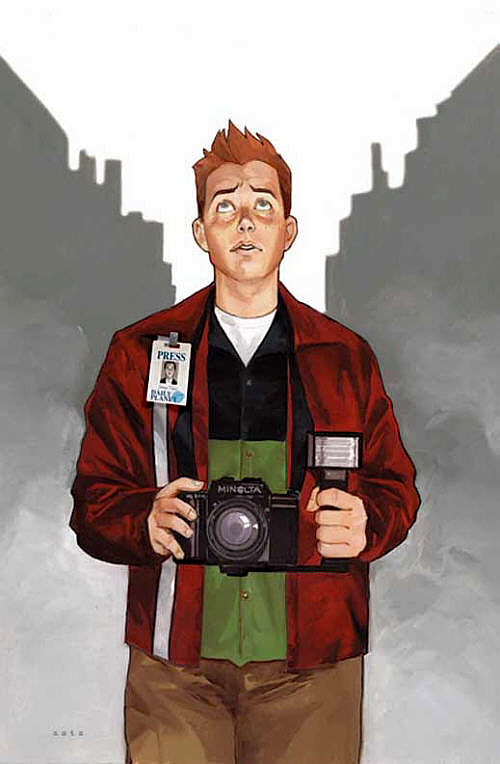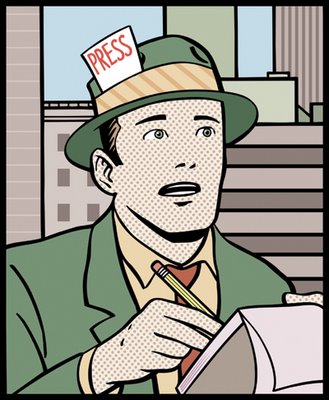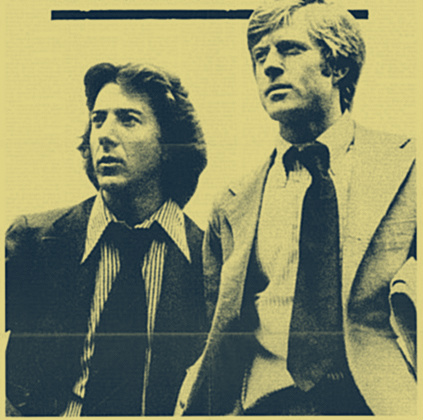
FORBES: The Pew Research Center estimates 5,000 newspaper jobs were lost in 2008. Since 2001, more than  10,000 newspaper journalists have lost work, leaving the total count of those still employed at 47,000 nationwide. It’s getting worse, fast. Erica Smith, who runs the online layoff tracker Paper Cuts, counts nearly 7,500 newsroom jobs lost so far this year.
10,000 newspaper journalists have lost work, leaving the total count of those still employed at 47,000 nationwide. It’s getting worse, fast. Erica Smith, who runs the online layoff tracker Paper Cuts, counts nearly 7,500 newsroom jobs lost so far this year.
Yet punishing times for journalism have been an unlikely boon for journalism schools. Would-be Woodwards and Bernsteins hiding out from the bad economy or learning new skills to compete stormed the admissions offices of top-tier programs last fall. Columbia, Stanford and NYU applications increased 38%, 20% and 6%, respectively, from the previous year. Same thing at state schools. The University of Colorado (up 11%), University of North Carolina (up 14%) and University of Maryland (up 25%) all saw gains. “I’m amazed that enrollment continues to be so healthy,” says Associate Professor Stephen Solomon at NYU’s Arthur L. Carter Journalism Institute.
Costs are up too. The average price for graduate school and living expenses has reached $31,000 per year. This  despite earnings for journalists with a graduate degree averaging just $40,000 in 2007 ($10,000 more than for those with just bachelor’s degrees). “I’ve never met a single person in 35 years who went into journalism out of pure economic reason,” explains Nicholas Lemann, dean of the Columbia School of Journalism.
despite earnings for journalists with a graduate degree averaging just $40,000 in 2007 ($10,000 more than for those with just bachelor’s degrees). “I’ve never met a single person in 35 years who went into journalism out of pure economic reason,” explains Nicholas Lemann, dean of the Columbia School of Journalism.
What are all these people going to do for a living? Some may actually get jobs in journalism. According to the Bureau of Labor Statistics, by 2016 the number of positions for entry-level reporters and news anchors will increase 2%, while those for experienced writers and editors will grow 10%. Expect trade publications, freelance work and digital media to supply the bulk of the jobs. MORE
CARL BERNSTEIN: In 1953, Joseph Alsop, then one of America’s leading syndicated columnists, went to the Philippines to cover an election. He did not go because he was asked to do so by his syndicate. He did not go because he was asked to do so by the newspapers that printed his column. He went at the request of the CIA. Alsop is one of more than 400 American journalists who in the past twenty-five years have secretly carried out assignments for the  Central Intelligence Agency, according to documents on file at CIA headquarters.
Central Intelligence Agency, according to documents on file at CIA headquarters.
Some of these journalists’ relationships with the Agency were tacit; some were explicit. There was cooperation, accommodation and overlap. Journalists provided a full range of clandestine services — from simple intelligence gathering to serving as go-betweens with spies in Communist countries. Reporters shared their notebooks with the CIA. Editors shared their staffs. Some of the journalists were Pulitzer Prize winners, distinguished reporters who considered themselves ambassadors-without-portfolio for their country. Most were less exalted: foreign correspondents who found that their association with the Agency helped their work; stringers and freelancers who were as interested it the derring-do of the spy business as in filing articles, and, the smallest category, full-time CIA employees masquerading as journalists abroad. In many instances, CIA documents show, journalists were engaged to perform tasks for the CIA with the consent of the managements America’s leading news organizations.
The history of the CIA’s involvement with the American press continues to be shrouded by an official policy of obfuscation and deception . . . .
Among the executives who lent their cooperation to the Agency were William Paley of the Columbia Broadcasting  System, Henry Luce of Time Inc., Arthur Hays Sulzberger of the New York Times, Barry Bingham Sr. of the Louisville Courier-Journal and James Copley of the Copley News Service. Other organizations which cooperated with the CIA include the American Broadcasting Company, the National Broadcasting Company, the Associated Press, United Press International, Reuters, Hearst Newspapers, Scripps-Howard, Newsweek magazine, the Mutual Broadcasting System, The Miami Herald, and the old Saturday Evening Post and New York Herald-Tribune. By far the most valuable of these associations, according to CIA officials, have been with The New York Times, CBS, and Time Inc.
System, Henry Luce of Time Inc., Arthur Hays Sulzberger of the New York Times, Barry Bingham Sr. of the Louisville Courier-Journal and James Copley of the Copley News Service. Other organizations which cooperated with the CIA include the American Broadcasting Company, the National Broadcasting Company, the Associated Press, United Press International, Reuters, Hearst Newspapers, Scripps-Howard, Newsweek magazine, the Mutual Broadcasting System, The Miami Herald, and the old Saturday Evening Post and New York Herald-Tribune. By far the most valuable of these associations, according to CIA officials, have been with The New York Times, CBS, and Time Inc.
… From the Agency’s perspective, there is nothing untoward in such relationships, and any ethical questions are a matter for the journalistic profession to resolve, not the intelligence community — Rolling Stone, Oct. 20, 1977
